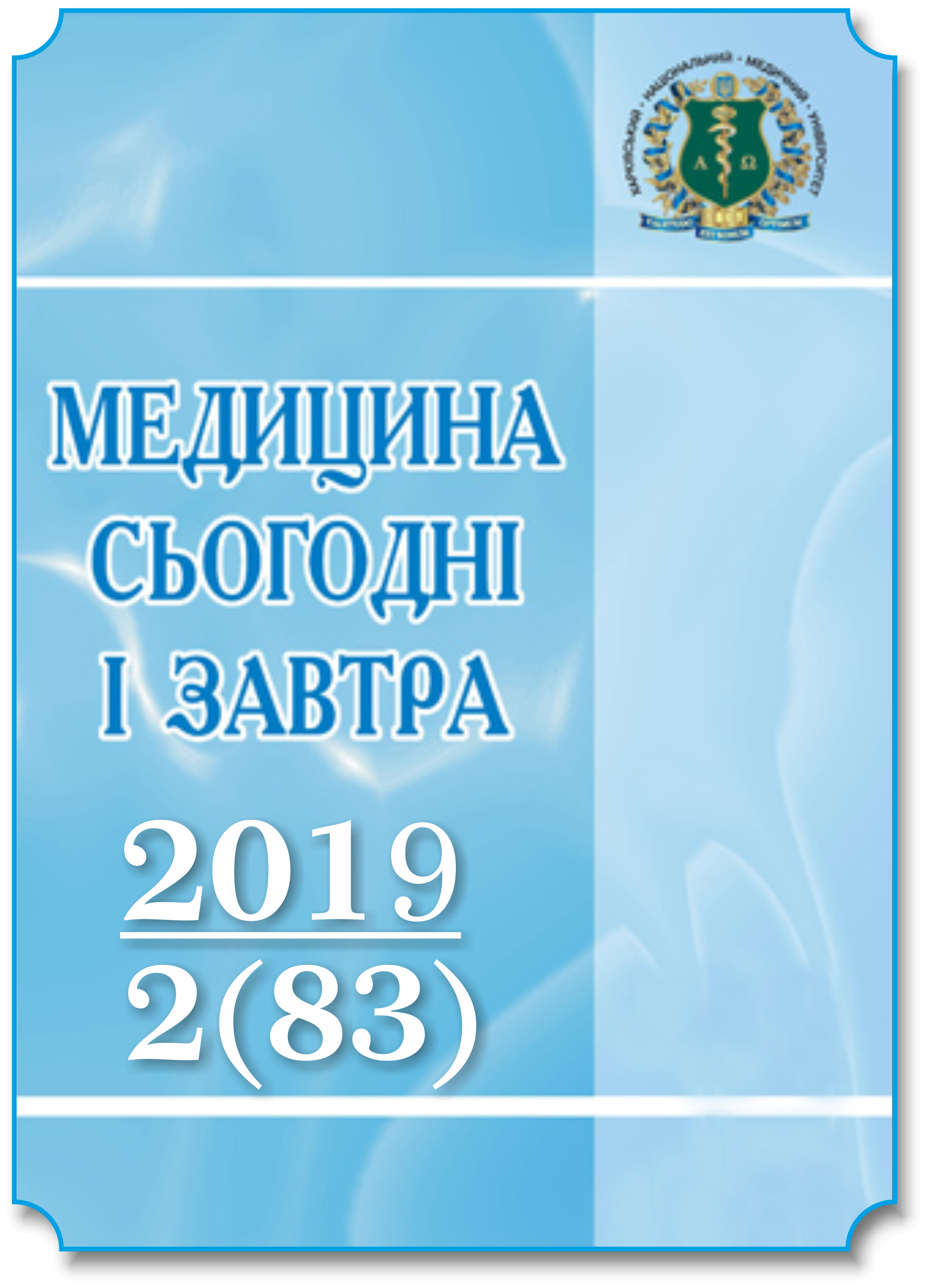Abstract
In 130 patients of surgical departments of various profiles on the basis of the Kharkiv city clinical hospital of emergency and emergency medical care named after prof. A.I. Meshchaninov after applying general anesthesia, determined the content of 2,3-diphosphoglycerate as an indicator of hypoxia depending on age. Surgery was performed under conditions of general multicomponent anesthesia with mechanical ventilation using propofol and fentanyl, sodium thiopental and fentanyl. Patients were divided into three groups: the 1st group are 46 young patients (18–43 years old); the 2nd group are 43 middle-aged patients (44–59 years old); 3rd group are 41 elderly patients (60–80 years). Anemia was observed in patients 18–43 years post-operatively one day after surgery: blood erythrocyte content decreased significantly by 19.04 %, and a 17.8 % decrease in hemoglobin was observed. Weeks after surgery, signs of anemia were still being identified: there was a decreased content of both erythrocytes, so there was still a tendency to decrease hemoglobin. The content of 2,3-diphosphoglycerate in the erythrocytes of this age group increased by 14.4 % a day after surgery, which confirms the adaptive mechanisms of support of oxygen supply of tissues, in particular the nerve in the young organism. A month later, the content of red blood cells, hemoglobin and 2,3-diphosphoglycerate does not differ from these indicators before surgery. In middle-aged surgical patients, more severe anemia was observed than in young patients one day after surgery: erythrocyte and hemoglobin content decreased by 28.6 % and 26.0 %, respectively, compared with healthy subjects. Comparing the severity of anemia a week later, the erythrocyte content decreased by 26.2 % and hemoglobin – by 31.3 %, compared with the younger group. A month later, these figures recovered. The content of 2,3-diphosphoglycerate increased significantly in the first week after anesthesia and surgery: it increased by 18 % a day and after 15 days by 15 % compared to the healthy group. With regard to the content of these indicators in the blood of elderly people before surgery, there was a decrease in the content of erythrocytes by 30.9 % and a tendency to decrease the content of hemoglobin. One day after surgery, anemia was more pronounced: the erythrocyte content in patients’ blood decreased by 31.0 % and hemoglobin – by 25.3 %. This condition worsened over time, a week later erythrocyte content decreased by 40.5 % and hemoglobin – by 24 %. Erythrocytes of patients of this age group showed a significant decrease in 2,3-diphosphoglycerate by 36 % per day and 31.6 % after a week after surgery. Signs of anemia were also observed one month after surgery: erythrocytes remained low – 23.8 % less than in the control group.
References
Honskyi Ya.I., Maksymchuk T.P. (2019). Biokhimiia liudyny [Human biochemistry]. Ya.I. Honskyi (Ed.). Ternopil, 732 p. [in Ukrainian].
Honskyi Ya.I. (2002). Biokhimiia liudyny [Human biochemistry]. Ya.I. Honskyi (Ed.). Ternopil, 744 p. [in Ukrainian].
Hubskyi Yu.I. (2007). Bioorhanichna khimiia [Bioorganic chemistry]. Yu.I. Hubskyi (Ed.). Vinnitsia: Nova knyha, 732 p. [in Ukrainian].
Marri R., Grenner D., Mejes P., Roduell V. (1993). Biokhimiia cheloveka [Human biochemistry]. (Vol. 1–2, Vol. 1). (Trans. from English). Moscow: Mir, 384 p. [in Russian].
Tkachuk V.A. (2004). Klinicheskaia biokhimiia [Clinical biochemistry]. (2nd ed.). Moscow: Meditsina, 515 p. [in Russian].
Baishukurova A.K. (1983). Obrazovaniie 2,3-DFG v eritrotsitakh pri eksperimentalnykh vozdeistviiakh, izmeniaiushchikh usloviia transporta kisloroda [The formation of 2,3-DPG in red blood cells under experimental influences that change the conditions of oxygen transport]. Extended abstract of candidate’s thesis. Moscow, 24 p. [in Russian].
Shevchenko Yu.L. (2000). Hipoksiia: adaptatsiia, patohenez, klinika [Hypoxia: adaptation, pathogenesis, clinic]. St. Petersburg: OOO «ELBI-SPb», 12 p. [in Russian].
Zinchuk V.V., Gacura S.V., Glutkina N.V. (2016). Korrektsiia kislorodtransportnoi funktsii krovi pri patolohii serdechno-sosudistoi sistemy [Correction of oxygen transport function of the blood in the pathology of the cardiovascular system]. Grodno : HrHMU, 312 p. [in Russian].
Tikhonova A.D. (2017). Toksicheskoie deistviie beta-amiloidnoho peptida 25-35 na eritrotsity raznykh vozrastnykh populiatsii [The toxic effect of beta-amyloid peptide 25-35 on red blood cells of different age populations]. Extended abstract of candidate’s thesis. Pushchino, 24 p. [in Russian].
Luhanova I.S., Blinov M.N. (1975). Opredeleniie 2,3-difosfohlitserinovoi kisloty neenzimaticheskim metodom i soderzhaniia 2,3 difosfohlitserata i ATF v eritrotsitakh bolnykh hronicheskim limfoleikozom [Determination of 2,3-diphosphoglyceric acid by a non-enzymatic method and the content of 2,3 diphosphoglycerate and ATP in red blood cells of patients with chronic lymphocytic leukemia]. Laboratornoie delo – Laboratory Science, № 11, pp. 652–655 [in Russian].

